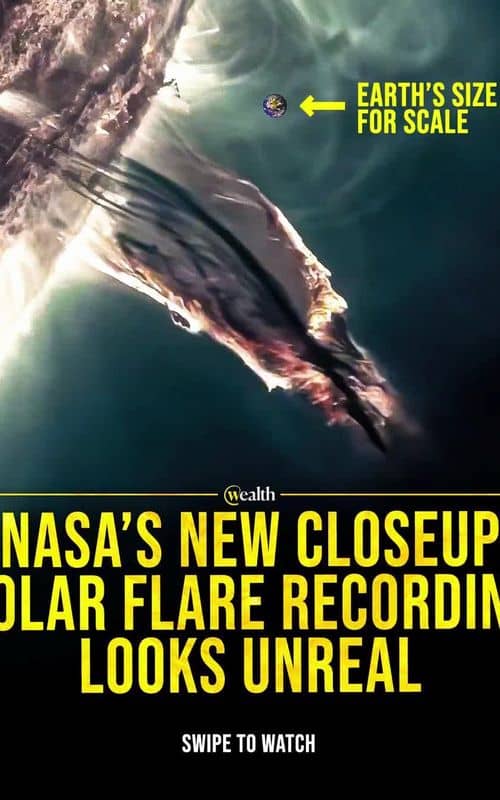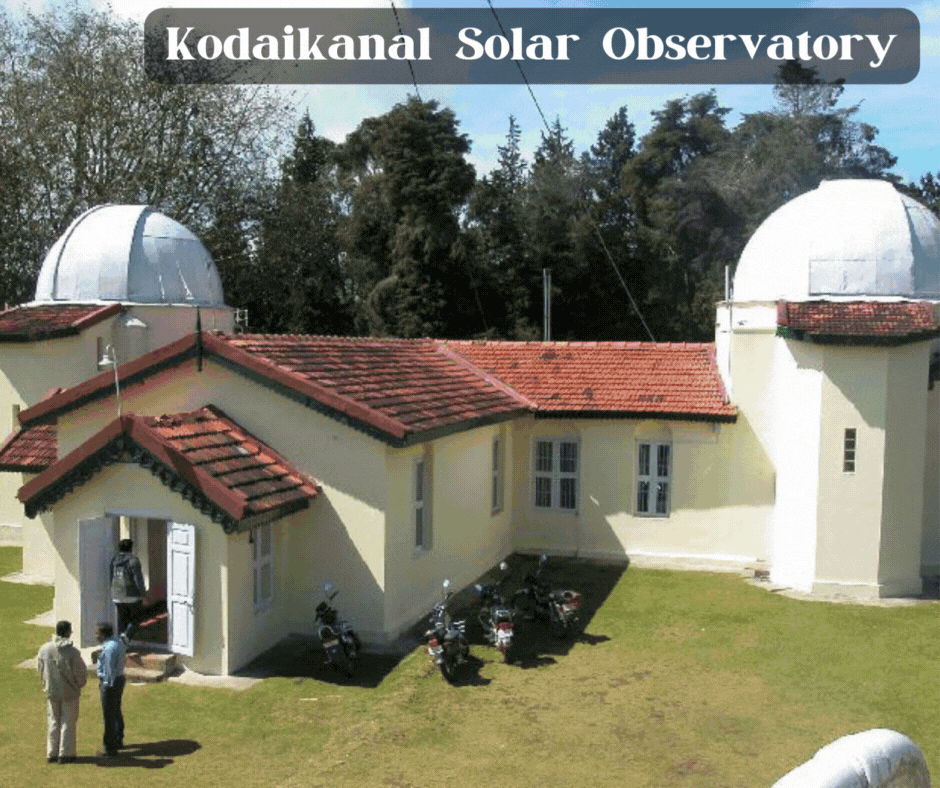Kodaikanal Solar Observatory
Explore India's oldest solar observatory, a hub of scientific discovery and historical significance in Kodaikanal.

Highlights
Must-see attractions

Social
From TikTok & Reddit
Best Time
Best for solar viewing
Kodaikanal Solar Observatory
Best Time
Best for solar viewing

Highlights
Must-see attractions
Explore India's oldest solar observatory, a hub of scientific discovery and historical significance in Kodaikanal.
"A must-visit for anyone interested in astronomy or science, offering a blend of history and breathtaking surroundings. "
🚶 Walk to the Facility
Be prepared for a pleasant 500m walk from the main gate to the observatory.
☀️ Visit on a Clear Day
Maximize your experience by visiting when the skies are clear for potential sunspot viewing.
Highlights
Discover the most iconic attractions and experiences

Vintage Telescopes & Solar Views
Museum exhibits
See and learn about historical telescopes used for solar research, with opportunities for live solar viewing on clear days.

The Evershed Effect Discovery
Museum displays
Discover the site where the significant Evershed effect was first detected, a key moment in solar physics history.

Educational Programs & Exhibits
Observatory grounds
Engage with informative posters, models, and displays detailing solar science and the observatory's legacy.
Plans like a pro.
Thinks like you
Planning Your Visit
Timing is Key for Solar Views
A Journey Through Solar Science
Best Times
Insider Tips
from TikTok, Instagram & Reddit
🚶 Walk to the Facility
Be prepared for a pleasant 500m walk from the main gate to the observatory.
☀️ Visit on a Clear Day
Maximize your experience by visiting when the skies are clear for potential sunspot viewing.
💰 Affordable Entry Fee
General visitor entry is around ₹50, making it a budget-friendly educational outing.
🤓 Knowledgeable Staff
Engage with the friendly and expert staff for fascinating insights into solar research.
Tips
from all over the internet
🚶 Walk to the Facility
Be prepared for a pleasant 500m walk from the main gate to the observatory.
☀️ Visit on a Clear Day
Maximize your experience by visiting when the skies are clear for potential sunspot viewing.
💰 Affordable Entry Fee
General visitor entry is around ₹50, making it a budget-friendly educational outing.
🤓 Knowledgeable Staff
Engage with the friendly and expert staff for fascinating insights into solar research.
🚗 Parking Available
Convenient parking is available a short distance from the main entrance.
What Travellers Say
Reviews Summary
Visitors praise the Kodaikanal Solar Observatory for its historical significance, educational value, and the opportunity to learn about solar research. The knowledgeable staff and affordable entry fee are frequently highlighted as positives. Some visitors note that the museum is modest and may not appeal to those seeking high-tech displays, but its scientific authenticity is appreciated.
"I recently visited the observatory and had a great experience! The place is dedicated to studying the Sun, which made it a really fascinating visit. From the main gate, you’ll need to walk about 500 meters to reach the facility, but the path is pleasant and worth it.
The staff were very knowledgeable and friendly, offering great insights into their work and explaining things clearly. There’s parking available a little distance away, which is convenient if you’re driving.
One of the highlights was the number of telescopes available for visitors to see and experience. It was exciting to get such a close look at the instruments used in solar research. Overall, a must-visit spot for anyone interested in astronomy or science!"
Pooshan d
"Historic and educational — the observatory, run by the Indian Institute of Astrophysics, has been doing solar research since the late 1800s.
The museum is modest but well‑maintained: posters, displays of telescopes & models, live solar image when conditions are good, and a Fraunhofer spectrum view.
Good for science lovers, students; less flashy for those expecting large multimedia, big displays or planetarium‑scale effects.
Location
About 4 km from Kodaikanal town in the Palani Hills.
Address: Observatory Road, near Govt Rose Garden, Kodaikanal, Tamil Nadu, PIN 624103.
Entry fee:Approx ₹50 per person for general visitors."
Padmaja Pol
"Must visited place…. They are proper maintained and well equipped… They have good knowledge & excellent Guides… They are explained about our whole Solar system… our atmosphere, different layer, all the planets and their surroundings… Deep knowledge of Sun and Moon… our India’s different Space mission… Its very great day for me…. Must visit… only 50 rs entry fee per person…."
Er. Shubham Patil
What People Like
What People Dislike
Frequently Asked Questions
🚇 🗺️ Getting There
The observatory is located about 4 km from Kodaikanal town in the Palani Hills, on Observatory Road, near the Government Rose Garden. Parking is available nearby, followed by a short walk to the facility.
While specific public transport routes directly to the observatory might be limited, local buses and taxis can take you to the general area of Kodaikanal town, from where you can arrange further transport or walk.
From Kodaikanal town, you can hire a taxi or auto-rickshaw to reach the observatory. A pleasant walk of about 500 meters from the main gate is also part of the experience.
Yes, parking is available a little distance away from the observatory, making it convenient for visitors arriving by car.
The address is Observatory Road, near Govt Rose Garden, Kodaikanal, Tamil Nadu, PIN 624103.
🎫 🎫 Tickets & Entry
The entry fee for general visitors is approximately ₹50 per person. Children often have free entry.
Advance booking is generally not required for general visitors. Tickets can be purchased at the entrance.
While specific hours can vary, it's best to plan your visit during daylight hours, especially for solar viewing. Mornings and late afternoons are often recommended.
The observatory and museum are typically open on weekends, but it's advisable to check for any specific holiday closures or updated timings.
Students are encouraged to visit, and while the general fee applies, the educational value is immense. Some events, like Engineer's Day, see significant student participation.
🎫 🔭 Onsite Experience
You can explore exhibits on solar science, view historical telescopes, learn about the Evershed effect, and potentially see live solar images on clear days.
Yes, on clear days, the observatory has specialized equipment, including the Ca Kodaikanal telescope, that allows visitors to safely view the Sun and observe sunspots and solar activity.
Absolutely! The observatory offers an educational and engaging experience for children interested in space and science, with knowledgeable guides to explain concepts.
The museum features posters, displays of telescopes and models, live solar images (conditions permitting), and a view of the Fraunhofer spectrum. It also showcases the history of solar research.
A visit can take anywhere from 1 to 2 hours, depending on your interest in the exhibits and whether you take a guided tour.
📸 📸 Photography
Photography is generally allowed in most public areas of the observatory and museum, but it's always good to check for any specific restrictions on certain exhibits or equipment.
The observatory dome, the vintage telescopes, and the scenic views of the surrounding Palani Hills offer great photographic opportunities.
Directly photographing the Sun through the telescopes without proper filters and expertise is not recommended for safety reasons. However, the observatory may provide images or displays of solar phenomena.
Drone usage is typically restricted at scientific facilities like observatories to avoid interference with sensitive equipment and for safety reasons. It's best to assume drones are not permitted.
A standard camera or smartphone is sufficient for capturing the exhibits and scenery. If you're interested in astrophotography, a telephoto lens might be useful for capturing the landscape, but not for direct solar observation.
For Different Travelers
Tailored advice for your travel style
👨👩👧 Families with Kids
🧑🎓 Students & Science Enthusiasts
🚶 Solo Travelers & Budget Explorers
Deep Dives
In-depth insights and expert knowledge
A Legacy of Solar Research
One of the most notable discoveries made here was the Evershed effect, first detected in January 1909. This phenomenon, related to the outward radial velocity of gas in the solar photosphere, was a crucial finding in solar studies. The observatory's unique geographical location in the Palani Hills also contributes to its suitability for astronomical observations.
Visitors can explore the museum which, while modest, is rich in history. It features displays of vintage telescopes, historical photographs, and models, offering a glimpse into the evolution of solar observation techniques. The live solar image display, when conditions are favorable, provides a direct connection to the Sun's current activity.
Experiencing the Observatory as a Visitor
For those interested in direct observation, the observatory offers opportunities to safely view the Sun. On clear days, you might witness sunspots and other solar activities through specialized instruments like the Ca Kodaikanal telescope. The staff are a valuable resource, providing knowledgeable insights and clear explanations about the Sun, its atmosphere, and the ongoing research.
While the observatory is not a flashy, multimedia-heavy attraction, its strength lies in its educational value and the authentic scientific atmosphere. It's a place that sparks curiosity and offers a deeper appreciation for the Sun's role in our solar system. The affordable entry fee makes it an accessible outing for families and students.
Social
from TikTok, Instagram & Reddit